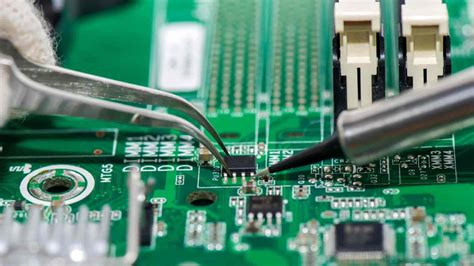PCB Logistics Distribution: Challenges, Strategies, and Future Trends
Introduction
Printed Circuit Boards (PCBs) are essential components in modern electronics, used in everything from consumer devices to industrial machinery. The logistics and distribution of PCBs involve complex supply chain processes, including manufacturing, transportation, warehousing, and last-mile delivery. Efficient PCB logistics ensures timely delivery, cost optimization, and quality control. This article explores the key challenges, best practices, and future trends in PCB logistics distribution.
1. The Importance of Efficient PCB Logistics
PCBs are delicate and require careful handling due to their sensitive electronic components. An optimized logistics system ensures:
- Timely Delivery: Electronics manufacturing relies on just-in-time (JIT) supply chains, where delays can disrupt production schedules.
- Cost Efficiency: Shipping, warehousing, and customs handling must be optimized to reduce expenses.
- Quality Assurance: PCBs are susceptible to damage from moisture, static electricity, and physical shocks, requiring specialized packaging and handling.
- Global Supply Chain Coordination: Many PCBs are manufactured in Asia (China, Taiwan, South Korea) and shipped worldwide, necessitating efficient international logistics.

2. Key Challenges in PCB Logistics Distribution
2.1. Fragility and Special Handling Requirements
PCBs contain fine conductive traces and components that can be damaged by:
- Physical Shock: Rough handling during transit can crack solder joints or break connections.
- Electrostatic Discharge (ESD): Improper packaging can lead to static damage, rendering PCBs non-functional.
- Moisture and Humidity: Exposure to moisture can cause oxidation or short circuits.
Solution: Anti-static packaging, moisture barrier bags, and shock-resistant containers are essential for safe transportation.
2.2. Supply Chain Disruptions
The PCB industry faces several supply chain risks:
- Geopolitical Issues: Trade tensions (e.g., U.S.-China tariffs) can impact sourcing and shipping.
- Component Shortages: Semiconductor shortages (e.g., during the COVID-19 pandemic) delayed PCB production.
- Logistics Bottlenecks: Port congestion, shipping delays, and air freight capacity issues affect lead times.
Solution: Diversifying suppliers, maintaining buffer stock, and using multiple transportation modes (air, sea, land) can mitigate risks.
2.3. Customs and Regulatory Compliance
PCBs shipped internationally must comply with:
- Export Controls: Some high-tech PCBs are subject to restrictions (e.g., ITAR in the U.S.).
- RoHS and REACH Regulations: Environmental laws restrict hazardous materials in PCBs.
- Tariffs and Duties: Incorrect classification can lead to delays and fines.
Solution: Partnering with experienced freight forwarders and ensuring proper documentation minimizes compliance risks.
2.4. High Transportation Costs
- Air Freight vs. Sea Freight: Air shipping is faster but expensive, while sea freight is cheaper but slower.
- Last-Mile Delivery Challenges: Urban congestion and remote manufacturing locations increase costs.
Solution: Optimizing shipping routes, consolidating shipments, and using regional warehouses can reduce expenses.

3. Best Practices in PCB Logistics Distribution
3.1. Advanced Packaging Solutions
- ESD-Safe Materials: Conductive foam, anti-static bags, and shielded containers prevent static damage.
- Vacuum Sealing: Protects against moisture and dust.
- Custom Crating: Reinforced packaging for high-value or large PCBs.
3.2. Real-Time Tracking and Visibility
- IoT Sensors: Monitor temperature, humidity, and shocks during transit.
- Blockchain for Traceability: Ensures authenticity and tracks shipments across the supply chain.
- GPS-Enabled Logistics: Provides real-time updates to manufacturers and customers.
3.3. Warehouse Optimization
- Strategic Location of Hubs: Placing warehouses near manufacturing clusters (e.g., Shenzhen, Germany, Mexico) reduces lead times.
- Automated Storage Systems: Robotics and AI-driven inventory management improve efficiency.
3.4. Sustainable Logistics Practices
- Green Shipping: Using carbon-neutral carriers or electric delivery vehicles.
- Recyclable Packaging: Reducing plastic waste with biodegradable materials.
- Route Optimization Software: Minimizing fuel consumption through efficient routing.
4. Future Trends in PCB Logistics Distribution
4.1. Automation and AI-Driven Logistics
- Autonomous Delivery Drones: For fast, last-mile PCB deliveries.
- Predictive Analytics: AI forecasts demand fluctuations and optimizes inventory.
4.2. 3D Printing and On-Demand Manufacturing
- Localized PCB Production: Reducing dependency on overseas shipping.
- Just-in-Time Manufacturing: 3D-printed PCBs could enable rapid prototyping and small-batch production.
4.3. Digital Twins for Supply Chain Simulation
- Virtual Supply Chain Models: Testing different logistics scenarios before implementation.
4.4. Enhanced Cybersecurity in Logistics
- Secure Data Transmission: Protecting shipment details from cyber threats.
Conclusion
The logistics and distribution of PCBs require precision, efficiency, and adaptability to overcome challenges such as fragility, supply chain disruptions, and regulatory compliance. By leveraging advanced packaging, real-time tracking, automation, and sustainable practices, companies can optimize their PCB supply chains. Future trends like AI, 3D printing, and digital twins will further revolutionize PCB logistics, ensuring faster, cheaper, and more reliable distribution in the electronics industry.
Investing in robust logistics strategies is not just a necessity but a competitive advantage in the fast-evolving world of PCB manufacturing and distribution.
This article provides a comprehensive overview of PCB logistics distribution, covering challenges, solutions, and future innovations. Let me know if you’d like any modifications or additional details!






